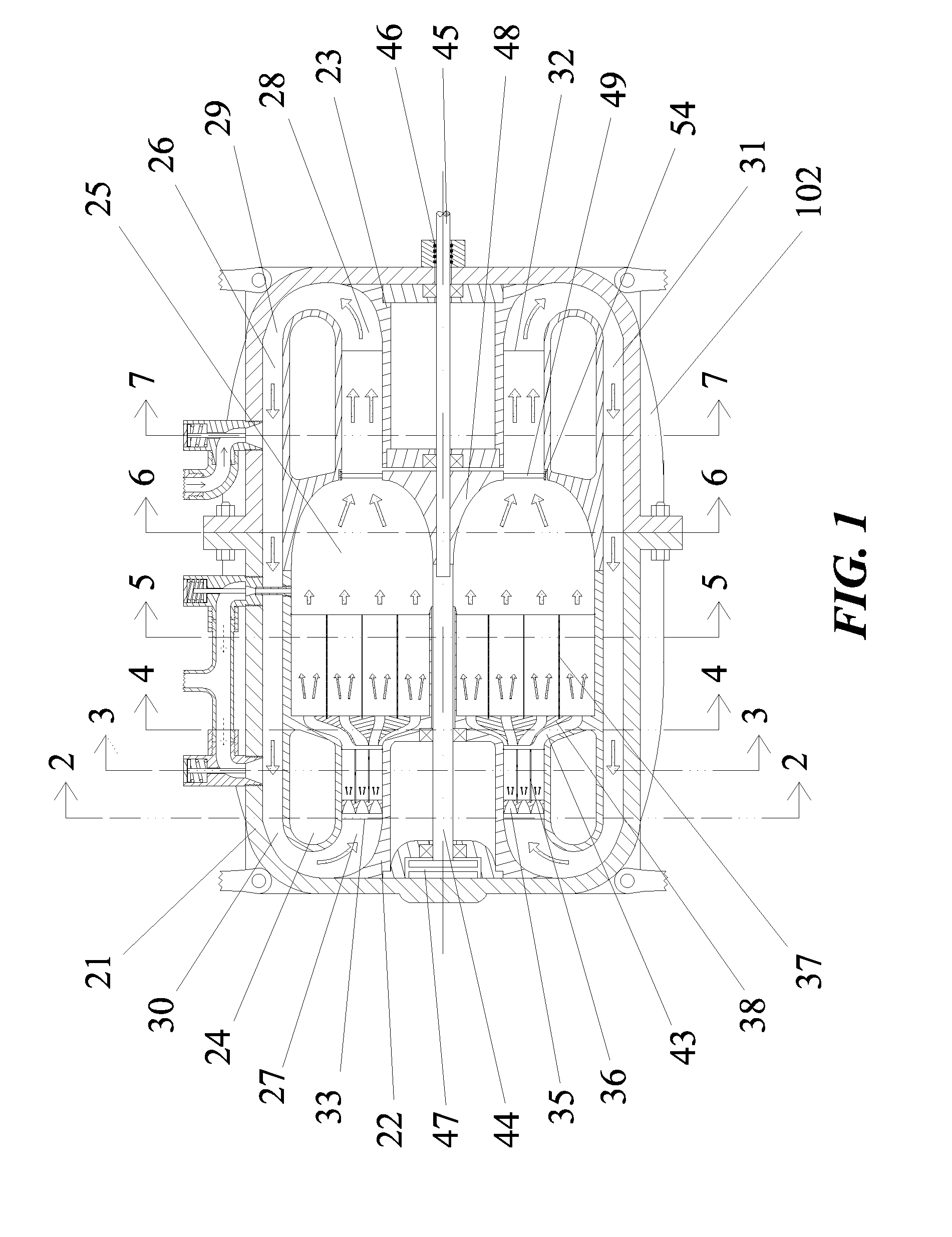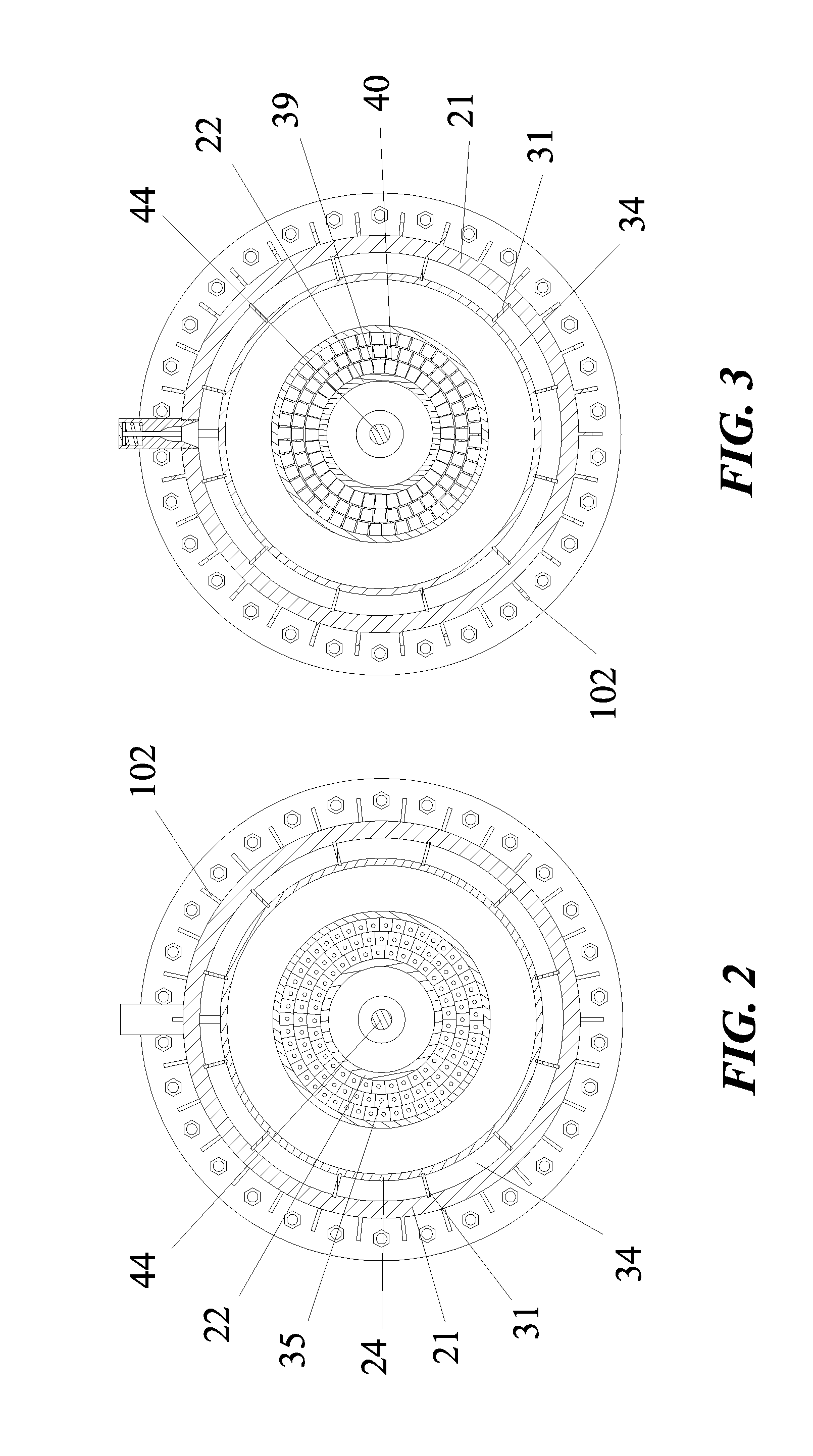Closed-cycle hydro-jet thruster
a closed-cycle, thruster technology, applied in the direction of clutches, transmissions, fluid couplings, etc., can solve the problems of reducing the torque-to-thrust conversion ratio provided by the direct torque-to-thrust conversion mechanism, limiting the use of land vehicles for hovercrafts, and hindering the efficient generation of thrust force to drive land, sea and air vehicles. , to achieve the effect of reducing the development of vortices, reducing the overall performance of blades
- Summary
- Abstract
- Description
- Claims
- Application Information
AI Technical Summary
Benefits of technology
Problems solved by technology
Method used
Image
Examples
Embodiment Construction
[0054]The present invention provides a closed-cycle hydro jet thruster (CCHJT) that includes a rotating cascade of blades having relatively low angles of attack, and directly interacting with a fluid medium completely enclosed within the CCHJT's casing, to generate thrust / lift force, with said generated force being used for propelling, or lifting, a movable vehicle.
[0055]The present invention also provides a CCHJT that can be used for propelling all types of land, sea and air vehicles, and which enables providing high Power-to-Thrust conversion ratios regardless of the cruising speed of the propelled vehicle.
[0056]As used hereinafter, the term “angle of attack” refers to the angle between the chord line of a blade and the vector representing the relative motion between the blade and a working fluid; and the term “low angle of attack” refers to and includes any angle of attack lying within the range between 2° and 14°.
[0057]Accordingly, the present invention provides a closed-cycle h...
PUM
 Login to View More
Login to View More Abstract
Description
Claims
Application Information
 Login to View More
Login to View More - R&D
- Intellectual Property
- Life Sciences
- Materials
- Tech Scout
- Unparalleled Data Quality
- Higher Quality Content
- 60% Fewer Hallucinations
Browse by: Latest US Patents, China's latest patents, Technical Efficacy Thesaurus, Application Domain, Technology Topic, Popular Technical Reports.
© 2025 PatSnap. All rights reserved.Legal|Privacy policy|Modern Slavery Act Transparency Statement|Sitemap|About US| Contact US: help@patsnap.com



